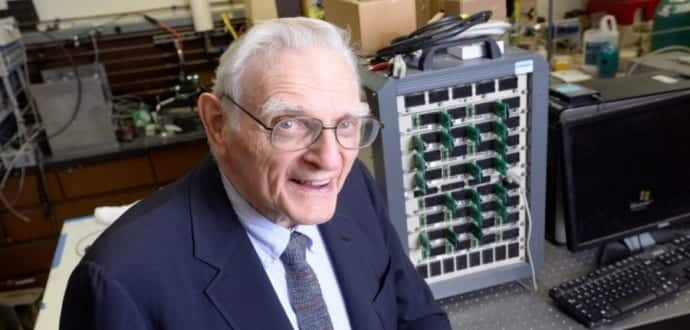Scientists are trying to make a better, safer and longer-lasting battery
John B. Goodenough, the creator of lithium-ion batteries, has come up with an alternative to modern day batteries. The 94-year-old is currently working with a team of researchers from Cockrell School to create a battery that will work longer, charge faster and will be safer to use.
A team of engineers at the University of Austin, led by Goodenough, has developed the world’s first low-cost all-solid-state battery that holds three times more energy than Li-ion battery. The research has been published in the journal of Energy & Environmental Science.
The solid state battery is not only safe but also has a long cycle life, a high volumetric energy density and fast rates of charge and discharge.
In Li-ion battery, liquid electrolytes are used to transport the ions between positive and negative sides of the battery. If the charging occurs too quickly, there is a risk of short circuit that may cause an explosion. However, the solid state battery replaces the liquid electrolyte found in lithium-ion batteries with glass. By using glass, the chances of lithium-ion batteries forming metal strands inside the liquid separating layers is eliminated, which in turn prevents short circuits, battery expansion or explosions. It would also allow batteries to operate at both hotter and cooler temperatures than current models allow.
The all-solid-state battery can be used for gadgets like smartphones and even electric vehicles or stationary energy storage.
“Cost, safety, energy density, rates of charge and discharge and cycle life are critical for battery-driven cars to be more widely adopted. We believe our discovery solves many of the problems that are inherent in today’s batteries,” Goodenough said.
This new battery tech would also replace lithium with sodium, which can easily be obtained from sea water, thereby reducing the cost of manufacturing battery even further.
Currently, the battery is still in the early stages of development and it is unclear whether it will be available for commercial production.

